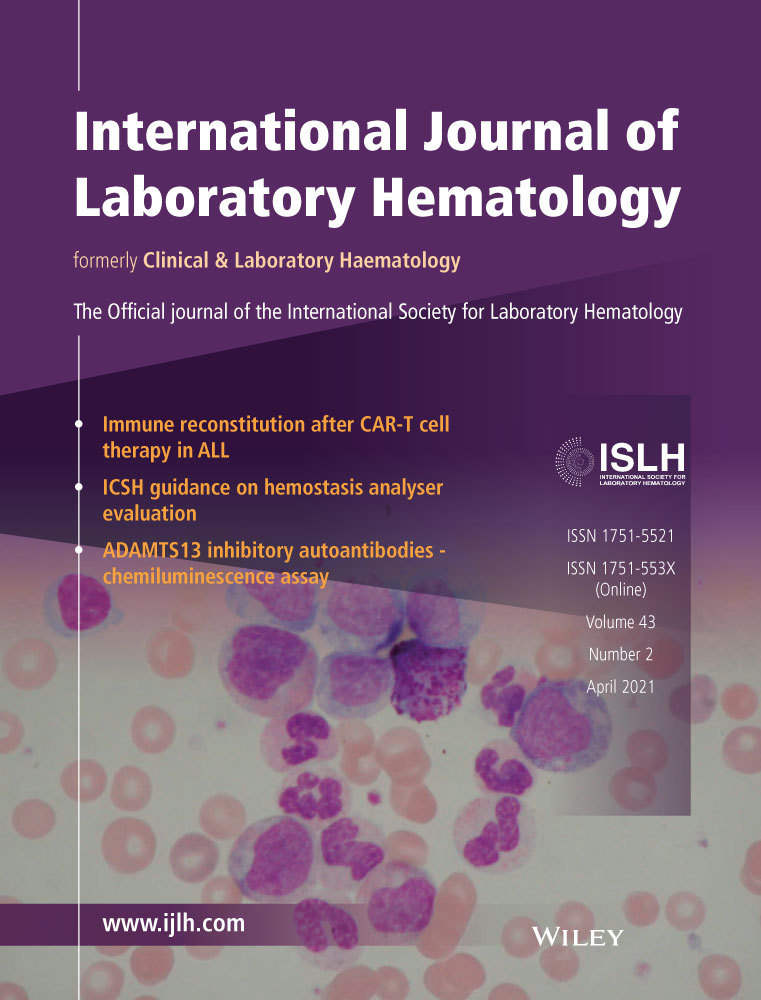MicroRNAs in urine as diagnostic biomarkers for multiple myeloma
Abstract
Introduction
Multiple myeloma (MM) is a hematological malignancy. It is of great clinical significance to screen microRNAs (miRNAs) in urine as noninvasive diagnostic biomarkers for MM.
Methods
Urinary miRNAs in MM were performed by Agilent Bioanalyzer 2100 and verified by quantitative real-time PCR (qRT-PCR). Receiver operator characteristic (ROC) was used to evaluate the diagnostic value of abnormal miRNAs for MM. Progression-free survival (PFS) of MM was calculated by Kaplan-Meier.
Results
In microarray analysis, twelve down-regulated miRNAs dysregulated in MM. The expression levels of miR-134-5p, miR-6500-5p, miR-548q, and miR-548y were validated. These miRNAs were significantly lower in MM (P < .05), but there was no significant difference between newly diagnosed, relapse, and remission group of MM (P> .05). ROC curve analysis showed that the sensitivity of miR-134-5p, miR-6500-5p, miR-548q, and miR-548y to MM was 91.7%, 100%, 100%, and 91.7%, and the specificity was 66.7%, 75.0%, 75.0%, and 100%, respectively. The four miRNAs were negatively correlated with the total urinary light chain (r = −0.427 P = .030, r = −0.461 P = .018, r = −0.469 P = .016, r = −0.493 P = .011). In addition, miR-134-5p, miR-6500-5p, and miR-548q were positively correlated with serum ALB (r = 0.518 P = .006, r = 0.400 P = .039,r = 0.492 P = .009). The expression level of miRNAs had no significant influence on PFS in MM patients (P> .05).
Conclusion
The results show that miR-134-5p, miR-6500-5p, miR-548q, and miR-548y are potential noninvasive diagnostic biomarkers for MM.
CONFLICT OF INTEREST
The authors declare that no conflict of interest exists.
Open Research
DATA AVAILABILITY STATEMENT
All data generated or analyzed to support the findings of this study are included within the article. These data are available from the corresponding author on reasonable request. Previously reported data were used to support this study and are available at [https://doi.org/10.1002/jcla.23233]. These prior studies are cited at relevant places within the text as references.11




